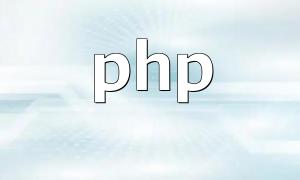In web application development, database operations such as create, read, update, and delete (CRUD) are essential. Among them, data deletion can be a frequent task, especially in applications with dynamic updates. However, frequent deletion requests can increase database load and reduce overall performance. To tackle this, Memcache can be used to handle data caching and optimize deletion operations for better efficiency.
Memcache is a high-performance, distributed memory caching system that stores data in memory to reduce database access frequency and enhance application performance and response speed.
The main advantages of Memcache include:
Common use cases include caching database query results, caching web page content, and implementing distributed session management.
By leveraging Memcache effectively, you can optimize data deletion in PHP applications and significantly reduce database pressure. Below are the steps to achieve this.
First, establish a connection between your PHP application and the Memcache server using the Memcached class:
$memcache = new Memcached();
$memcache->addServer('localhost', 11211);
This snippet creates a new Memcached object and connects it to the local server.
Before deleting data, check whether the data exists in Memcache. If it does, delete it directly from the cache. If not, retrieve it from the database, store it in the cache, and then delete it. This ensures consistency and prevents unnecessary database hits.
$key = 'data_key';
$data = $memcache->get($key);
if ($data) {
$memcache->delete($key);
} else {
$data = $database->getData(); // Retrieve data from the database
$memcache->set($key, $data);
$memcache->delete($key);
}
This approach minimizes redundant database queries while keeping your application logic clean and efficient.
After deleting data, it’s important to remove or update any related cache entries to maintain data consistency and prevent stale data. For example:
$index = 'index_key';
$data_key = 'data_key';
$related_keys = array($index, $data_key); // Related keys
$memcache->deleteMulti($related_keys);
By using deleteMulti(), you can remove multiple cache items at once, ensuring all related data stays synchronized.
Using Memcache to optimize data deletion in PHP can significantly reduce database load and improve system performance and user experience. Developers should pay attention to maintaining data consistency between the cache and the database and design caching strategies based on real-world needs. When implemented properly, Memcache can help build faster, more reliable, and highly scalable PHP applications.









